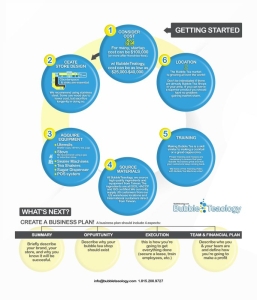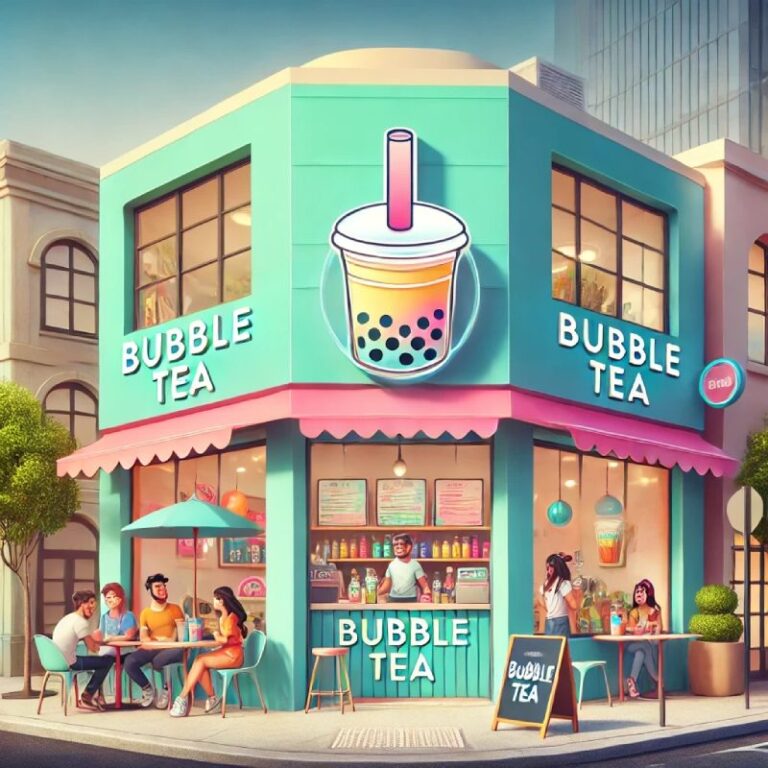

What is the difference between boba and bubble tea? Learn the key distinctions, history, and why people use these terms interchangeably.
Bubble tea has taken the world by storm, but not everyone agrees on what to call it. Some people say boba, others call it bubble tea, and the confusion has led to endless debates over which term is correct.
Bubble tea traces its roots back to Taiwan in the 1980s, where it quickly became a popular street drink. It started as a simple mix of tea, milk, and sugar, but the addition of chewy tapioca pearls transformed it into the beloved beverage we know today.
Bubble tea was born when tea shop owners began experimenting with new flavors and textures. One shop, Chun Shui Tang, claims to have introduced the shaken tea concept, while Hanlin Tea Room argues they were the first to add tapioca pearls to the drink.
The name bubble tea comes from the frothy bubbles that form when the drink is shaken. Many assume it refers to the tapioca pearls, but the original term actually described the foamy top created during the mixing process.
Tapioca pearls were added to enhance the texture of bubble tea, making it more of a dessert-like treat. These pearls, made from cassava starch, provided a chewy contrast to the smoothness of the tea, making the drink even more enjoyable.
Bubble tea remained a Taiwanese favorite until it expanded into other parts of Asia and later made its way to the United States. Over time, the drink evolved with new flavors, toppings, and variations, leading to the boba vs. bubble tea naming debate.
Boba is often used interchangeably with bubble tea, but the term actually refers to the small, chewy tapioca pearls found at the bottom of the drink. These pearls add a unique texture to the beverage, making each sip a combination of smooth tea and satisfying chewiness.
Boba is made from tapioca starch, which comes from the cassava root. The starch is mixed with water, rolled into small spheres, and boiled until it reaches the perfect chewy consistency.
Traditional black tapioca pearls are the most common, but other varieties exist, including clear, honey-infused, and flavored pearls. Some shops also offer popping boba, which are juice-filled spheres that burst in your mouth for a different experience.
Boba has a soft, chewy texture that complements the smoothness of bubble tea. While the pearls themselves are naturally flavorless, they absorb the sweetness of the drink, making them a delicious addition to any cup.
In certain regions, especially on the West Coast of the United States, people refer to bubble tea as boba because of the drink’s defining ingredient. The term has become so common that many shops market their menus using boba instead of bubble tea, further fueling the confusion.
While many people use boba and bubble tea interchangeably, they do not mean exactly the same thing. Bubble tea refers to the entire drink, while boba specifically describes the chewy tapioca pearls that give the beverage its signature texture.
Bubble tea is a broad term that includes any tea-based beverage mixed with milk, fruit, or other flavors and served with various toppings. Whether it contains tapioca pearls, fruit jelly, or popping boba, the drink itself is still called bubble tea.
Boba, on the other hand, is the name for the round, chewy pearls made from tapioca starch. Some people have extended the use of the word to describe the entire drink, but traditionally, boba refers only to the ingredient, not the beverage itself.
The term boba is more commonly used in places like California and other parts of the West Coast, where bubble tea first gained popularity in the United States. In contrast, East Coast cities and many Asian countries still refer to the drink as bubble tea, maintaining its original name.
The naming debate largely stems from how bubble tea was introduced to different markets. Some brands and shops marketed their drinks as boba tea, while others stuck with the original bubble tea name, leading to regional variations that persist today.
Bubble tea has evolved far beyond its original milk tea form, with endless combinations of flavors, toppings, and textures. Whether you prefer creamy milk tea, fruity blends, or refreshing iced varieties, there is a bubble tea for every taste preference.
Milk tea is the most traditional form of bubble tea, combining brewed tea with milk, cream, or non-dairy alternatives for a smooth and creamy taste. Fruit tea, on the other hand, is made with real fruit juice or flavored syrups, creating a refreshing and often caffeine-free option.
Classic flavors like black milk tea, taro, and jasmine green tea remain favorites, but newer options like matcha, Thai tea, and honeydew have gained popularity. Many shops also offer seasonal or exotic flavors, such as lychee, passion fruit, and roasted oolong.
While boba remains the most popular topping, other choices include fruit jelly, red bean, aloe vera, and egg pudding. Popping boba, which bursts with fruit juice when bitten, adds a fun alternative to traditional tapioca pearls.
Although most people associate bubble tea with an iced drink, some variations are served hot, especially in colder months. Hot bubble tea provides a comforting experience while maintaining the same rich flavors found in its chilled counterpart.
Over time, boba and bubble tea have become nearly interchangeable terms, even though they originally had different meanings. The rise of social media, regional preferences, and the global spread of the drink have all contributed to the blending of these names.
Since bubble tea originated in Taiwan, the drink’s identity is deeply tied to Taiwanese food culture. As it spread internationally, many people associated the chewy tapioca pearls, or boba, as the defining characteristic of the beverage.
In the United States, particularly on the West Coast, bubble tea was introduced with a focus on its tapioca pearls, leading people to refer to the drink simply as boba. This shorthand quickly caught on, and many bubble tea shops began branding their menus using the term.
Platforms like Instagram and TikTok have played a major role in popularizing bubble tea, often showcasing colorful drinks with layers of flavors and toppings. Since many influencers and brands use boba as a catchy and recognizable term, the name continues to spread globally.
In many parts of Asia and on the East Coast of the United States, bubble tea remains the preferred name. These regions tend to stick with the original terminology, reinforcing the distinction between the drink itself and the tapioca pearls.
The choice between calling it boba or bubble tea depends largely on where you are and who you’re talking to. While both terms are widely understood, certain regions and cultures prefer one over the other, making it helpful to know the difference when ordering.
On the West Coast, particularly in California, boba is the dominant term, and many shops market their drinks under this name. In contrast, the East Coast and Midwest tend to use bubble tea, aligning more closely with the drink’s Taiwanese origins.
In Taiwan, where the drink originated, bubble tea is commonly known as pearl milk tea or zhenzhu naicha. Other countries, such as Canada, Australia, and the UK, also lean toward bubble tea, though boba is sometimes used in cities with strong Taiwanese or Chinese influence.
When visiting a new city, looking at a shop’s signage or menu can give a clue about which term is preferred. If in doubt, asking for bubble tea will almost always be understood, whereas saying boba might only make sense in certain locations.
As bubble tea continues to expand in popularity worldwide, more people recognize both names and use them interchangeably. Whether you say boba or bubble tea, the most important thing is enjoying the drink exactly how you like it.
While boba and bubble tea are often used interchangeably, they originally referred to different things. Bubble tea describes the entire drink, while boba specifically refers to the chewy tapioca pearls that give the beverage its signature texture.
Understanding the distinction can help clear up confusion when ordering, especially in different regions. Whether you ask for boba or bubble tea, knowing the difference ensures you get exactly what you’re expecting.
Regardless of what you call it, bubble tea has become a beloved drink worldwide, with endless flavors, toppings, and customizations. Its ability to evolve with new trends and preferences has only fueled its growing popularity.
If you’re looking to start your own bubble tea business, BubbleTeaology offers high-quality equipment, supplies, and expert guidance. With the right tools, you can create authentic and delicious bubble tea that keeps customers coming back for more.
Contact BubbleTeaology Today to learn more about our premium bubble tea machines and supplies.
Learn more about Bubble Tea and why it’s a global phenomenon.
Q: What is the difference between boba and bubble tea?
A: Bubble tea refers to the entire drink, which is made with tea, milk, and various toppings, while boba specifically refers to the chewy tapioca pearls added to the drink. Some people use boba as a nickname for bubble tea, but traditionally, they are not the same thing.
Q: Why do some people call it boba instead of bubble tea?
A: The term boba became popular in certain regions, especially on the West Coast of the United States, where the drink was introduced with a focus on its tapioca pearls. Over time, people started using boba to refer to the entire beverage, even though bubble tea is the more accurate term.
Q: What other toppings can be added to bubble tea besides boba?
A: Bubble tea can be customized with a variety of toppings, including popping boba, fruit jelly, grass jelly, aloe vera, red bean, and egg pudding. Each topping adds a unique texture and flavor to the drink.
Q: Is bubble tea always made with milk?
A: No, bubble tea comes in many varieties, including fruit-based teas that do not contain milk. Some popular non-milk options include green tea, black tea with fruit syrup, and herbal tea blends.
Q: How can I make bubble tea at home?
A: Making bubble tea at home is simple with the right ingredients. Brew your choice of tea, mix in milk or fruit syrup, add ice, and top it off with cooked tapioca pearls or other toppings of your choice.
Copyright © 2023 BubbleTeaology. All Rights Reserved.